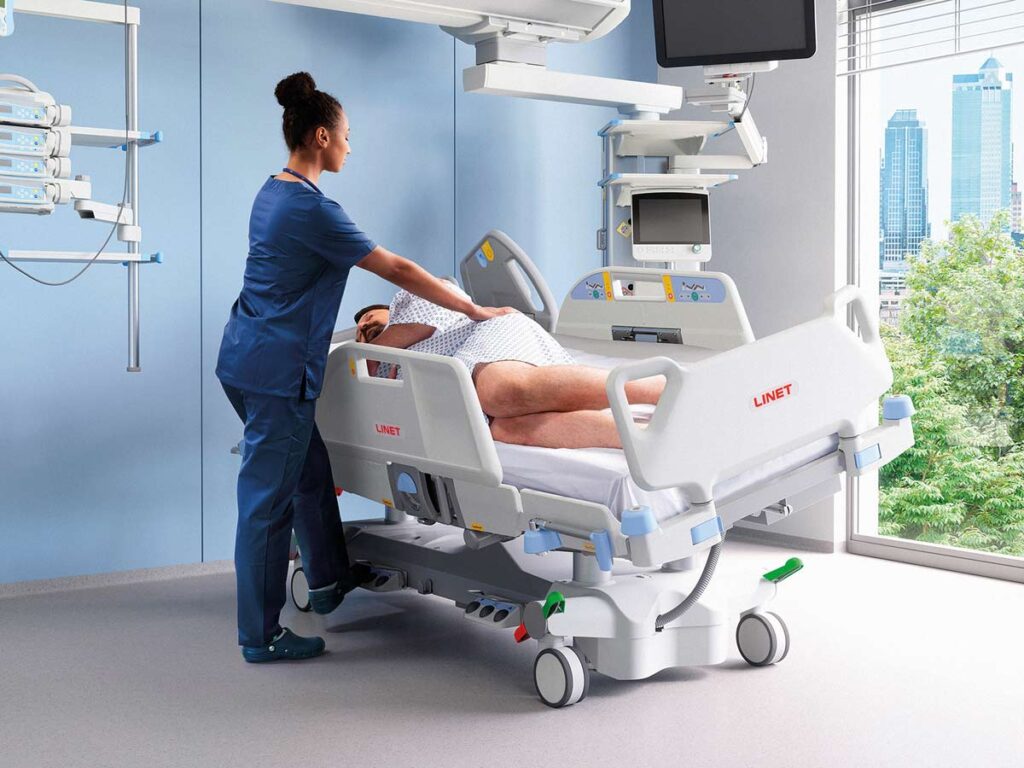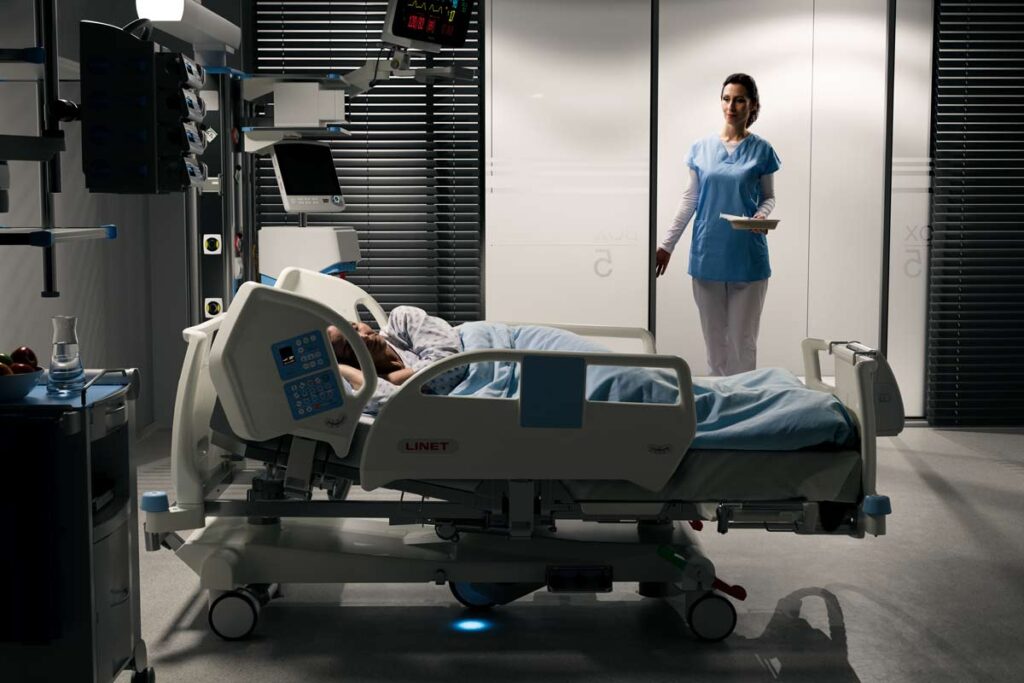
Patient safety and medical error prevention have been receiving significant attention in recent years as they have become the cornerstone in hospitals. Improving patient safety and quality of healthcare is key as every patient has the right to receive care in a safe and secure setting.
Patient safety is the cornerstone of healthcare and the goal is to prevent any avoidable harm when the patient receives a health service, anytime anywhere. Patient safety is fundamental to delivering quality essential health services. It aims to prevent and reduce risks, errors and harm that occur to patients during provision of healthcare. Since patient safety is built on certain foundations and behaviors, it contributes to accelerating patient recovery. The application of international accreditation standards has contributed to improving patient safety and reducing medical errors by raising the quality of medical services offered by healthcare providers.
Physicians’ adherence to treatment protocols and clinical practices within the medical community, in addition to following evidence-based medical practices and applying the foundations of patient-centered healthcare, contributed to reducing medical error rates, and providing the patient with the safety needed.
Patient safety is a top priority for hospitals as they attract patients thanks to their good reputation in the medical community. It will also facilitate the process of obtaining international accreditations, making the patient trust the medical service he will receive. A quality certification is a testament to the hospital’s commitment to international patient safety standards, because it includes the medical and administrative work of any health facility.
Patient-centered care
Today, patient-centered care is a key aspect of patient safety. Hospital administrators focus on patient-centered care as it is tied to the patient experience and health outcomes. It is not only about caring for and treating the patient, but it goes beyond that to include dealing with him in a more comprehensive way by talking with him and listening to his complaints, as he should be considered a real partner in the treatment journey. This modern approach to patient care and safety aims to strengthen the human-centered comprehensive care model, which has shown a tangible improvement in the patient experience or the healthcare provider’s. This has increased patient satisfaction, decreased hospital readmission rates and reduced healthcare costs.
Foundations of patient safety in health facilities
There are many elements that must be achieved and acted upon in order to ensure that the patient receives the necessary healthcare.
Safety management system
Some hospitals and health facilities were keen to establish a health and safety management system where healthcare providers develop guidelines that determine the performance of this system in the institution based on their hands-on work experience and their experience with patients. Business strategies were developed to enhance performance and patient safety by providing quality healthcare, in addition to preparing effective rapid response teams.
The hospital administration shall make all its employees and personnel undergo training programs on workplace safety in hospitals, including patient and worker safety.
Every individual should know the importance of the responsibility that falls upon him in terms of maintaining their safety and the safety of those around him. The medical facility management must follow up closely on the matter in order to ensure that safety and security standards are implemented.
Infection Control
Hospitals have attached special importance to infection control programs by establishing a special department that seeks to implement international standards and monitor the hospital environment to reduce the risk of infection as much as possible in order to ensure patient safety. Infection control practices and hygiene procedures should be performed on a daily basis; they are the responsibility of each individual working in the hospital. Ensuring patient safety during the hospital stay requires creating a clean healthy environment and applying the latest mechanisms and strategies to prevent the spread of infection or its presence in the hospital environment.
The standard infection control precautions include hand hygiene, dealing with hospital-acquired infections and epidemic outbreaks, disinfection and sterilization of machines and surgical equipment, safe management and care of environment, personal protective equipment, safe management of blood and body fluids and safe disposal of waste.
Global infection control guidelines that should be implemented include:
- Regular handwashing before and after touching a patient especially when taking samples from him.
- Personal Protective Equipment that should be worn by healthcare staff to protect themselves against exposure to harmful pathogens.
- Safe disposal of waste followed by cleaning and disinfection to eliminate enough pathogens to prevent transmission of infection.
- Isolation precautions should be used for patients who are either known or suspected to have an infectious disease or who are particularly susceptible to infection.
- Cleaning of high-risk touchpoints is essential. When cleaning it is essential the appropriate cleaning products and disinfectants are used. The environment for patients and healthcare staff must be safe for practice. Even if an area may look clean, many dangerous micro-organisms can live on surfaces.
Hospital Design
The hospital’s interior and exterior design contributes to improving recovery rates by creating patient rooms and private bathrooms that provide the necessary comfort to the patient. Nursing Units should be in close proximity to patient rooms. It is also necessary to ventilate the rooms to remove pathogens present in the air of the hospital room, as well as providing of sufficient and appropriate hand hygiene facilities in the entire hospital to increase safety.
A pest control program must be developed and implemented in the health facility, with the selection of appropriate furniture that meets the necessary conditions to ensure patient safety, such as medical beds, transport stretcher trolleys, fire retardant and washable curtains, etc.
The hospital design should include specifications in terms of location, area, interior space distribution, standards and specifications of the building materials used, as well as appropriate ventilation and lighting systems, around-the-clock water and power supply. When developing the health facility design, people with special needs should be taken into account and safety requirements should be available to protect patients, workers and visitors from accidents and injuries during the project implementation.
Nursing Staff
The presence of a professional and highly trained nursing staff who has the ability to accurately organize medication administration in a timely manner, and to develop a medication schedule and explain it to the patient in a simple way in order for him to understand.
After being discharged from hospital, nurses should educate the patient about how to take their medication doses, and the major consequences of medication errors. In addition, the nursing staff and other healthcare providers should reduce the risk of bloodstream infections.
Surgeries
Ensuring patient safety in the operating room is fundamental and it begins before the patient enters the operative suite. It includes attention to all applicable types of preventable medical errors. The surgical team should follow the hospital’s procedures for surgical handwash and hand hygiene. Sterile operating gowns should be worn in addition to tight surgical masks which cover the nose and mouth. The appropriate surgical site skin preparation should be done prior to surgery within the operating room. The skin around the incision site should be carefully washed and cleaned.
To maintain patient safety in the operating room, the surgical team should undergo training programs on the policies and procedures adopted in surgeries and related to infection control. Movement in the OR should be kept to a minimum to avoid contamination of sterile items or persons. When operating room doors are opened, it decreases the sterility of the surgical suite. Therefore, the doors should remain closed at all times. Disposal of unusable and unused tools and equipment from the operating rooms is necessary. The process of cleaning and preparing between surgeries takes about 15-20 minutes, which is enough time to have a proper air ventilation in the operating room in a way that ensures patient safety.
Medication Administration Safety
Being administered the right medication at the right time is one of the key elements of public safety, as this contributes to improving the drug treatment service, promoting health and wellness, and preventing disease. Hospitals follow specific policies and procedures based on scientific studies.
The medicine reaches the patient after passing through an integrated cycle that ensures that he gets the right medicine that meets international standards. This is done through a communication network between hospital departments and the pharmacy, which is in turn connected to the medical warehouses to provide medications while mentioning the expiry date of every medicine.
Then, the pharmacist or nurse distributes these medications to patients by passing through the various hospital departments in order to ensure the expiry of medicines they have. There are also regulations for good storage practices such as the need to maintain storage temperature.
Today, this mechanism of action is carried out through the “smart pharmacy” system, with the presence of an automated program that saves time for the pharmacist, who checks prescriptions and educates the patient about how to use the medication to ensure its optimal use.
Lab and Blood Bank Safety
The lab and blood bank safety rules must be followed by both employees and patients. Respecting the safety and security measures also aims to control the quality of lab tests to ensure the delivery of reliable and accurate results that help make the optimal decision to treat the patient in order to prevent errors that may negatively affect the patient’s health.
The necessary technical procedures including the storage, transportation and disposal of blood and blood components, as well as the need to ensure that the donor is disease-free are all very important steps to ensure the safety of blood samples before sending them to patients while covering the needs of the health facility for normal and emergency cases.


















